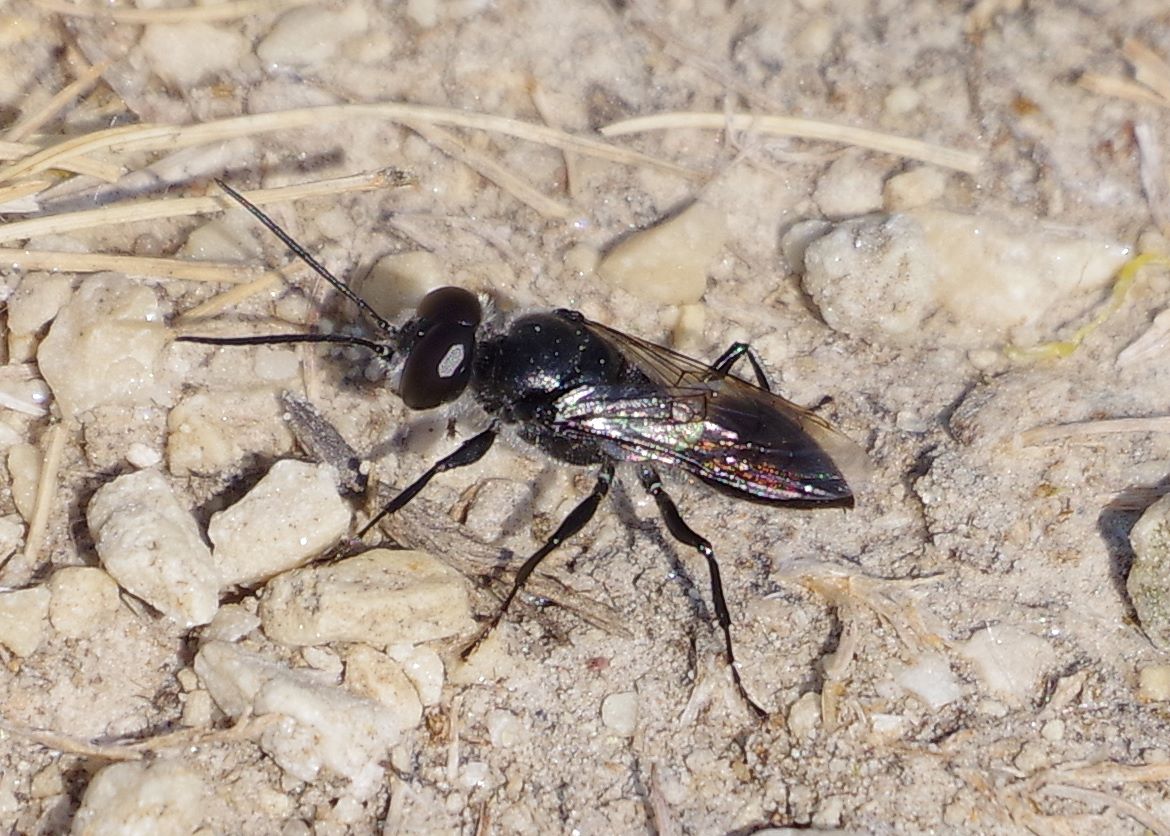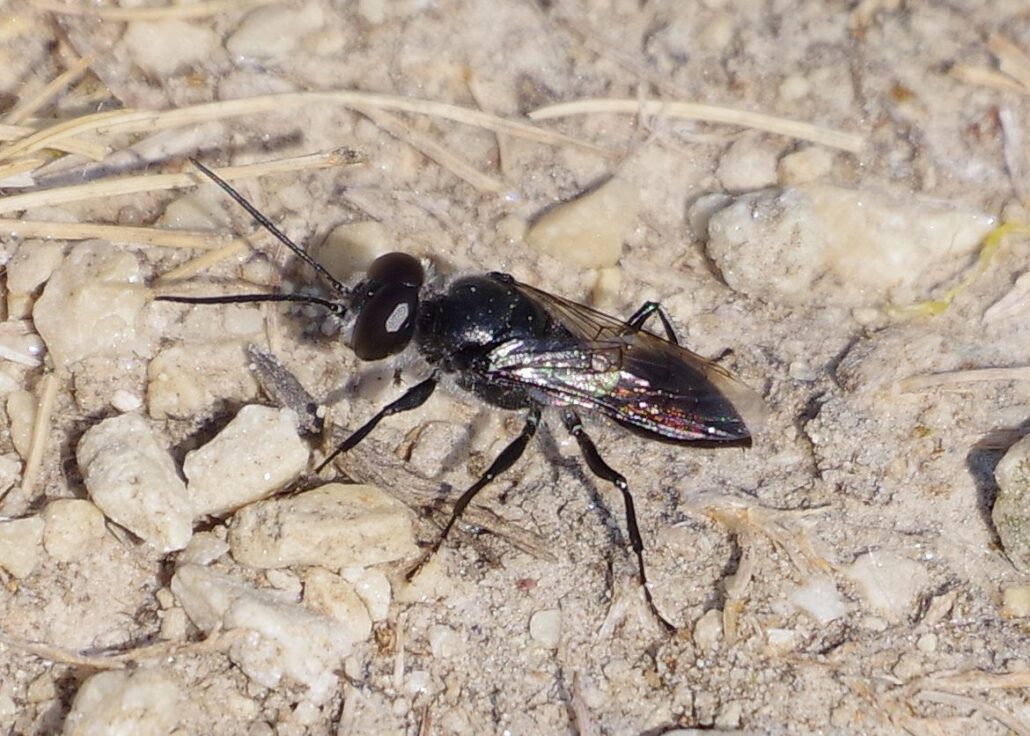
by Kate Redmond
Bug o’the Week Monochromatic Stink Bug-Hunting Wasp
Howdy, BugFans,
Another wasp with a dynamite name!
When the BugLady found this wasp, she was struck by its curious appearance – fly-like eyes, waspy antennae, “broad-shouldered,” but with a very short abdomen (“It’s compact,” says bugguide.net).
It’s in the family Crabronidae, the Sand wasps and Square-headed wasps, which have been featured before, most recently in the form of the Robust katydid-hunting wasp. Crabronidae is a large family that used to be lumped with the solitary wasps in the family Sphecidae, the mud daubers, sand wasps, and hunting wasps. There are lots of Crabronid species worldwide; they create egg chambers and cache paralyzed invertebrates in them for their eventual larvae to eat, and many species are very fussy about the kinds of prey they collect. Adults feed on nectar.
Monochromatic Stink Bug-Hunting Wasps (Astata unicolor) (probably) live in grasslands and savannas (members of the genus Astata can be hard to differentiate, but the MSBHW is a widespread species in the East). Astata comes from the Greek word astatos, meaning “restless.” According to the Minnesota Seasons website, it’s found “across southern Canada, throughout the United States and Mexico, and in Central America” but is not common anywhere. Habitat/soil types probably help determine a species presence.
These are very alert, curious, and fast-flying little (half-inch) wasps, with dark-tipped wings and a coating of silvery hairs. The males’ wrap-around (holoptic) eyes are typical of the genus. Here’s a Glamour Shot – https://bugguide.net/node/view/467930/bgimage.

A female MSBHW’s prey of choice are the mature nymphs and adults of a few genera of stink bugs, including the Spined stink bug https://bugguide.net/node/view/875677. Out West, their menu also includes the Western box elder bug.
Males sit on perches to scout for females (those big eyes come in handy) – males emerge as adults about two weeks before females do, and they set up territories while they’re waiting (cherchez la femme). They advertise by making brief, circular forays from perches.
Females dig tunnels as deep as 14” in loose soil. Heather Holm, in her epic book Wasps, Their Biology, Diversity, and Role as Beneficial Insects and Pollinators of Native Plants, writes that “after mating, the female begins excavating her nest in the ground, often preferring a partially concealed site with bare soil such as under a plant leaf. As she excavates the nest, she loosens soil with her mandibles and forelegs, then pushes the soil up the burrow with the end of her abdomen.” The tunnel contains several cells.
Holm continues, “She leaves the nest entrance open while searching for prey but while in the nest at night to rest, she closes the entrance with soil. She searches for predatory stink bug nymphs in vegetation and likely uses olfactory senses in addition to sight to find her prey. After capturing and stinging her prey https://bugguide.net/node/view/70575/bgimage, she grasps the prey by the antennae, then clutches it with her legs beneath her as she flies close to the ground back to her nest. She either enters the nest clutching her prey or she places it on the ground next to the entrance. If the latter, she enters the nest, emerges headfirst, then drags the prey down the burrow, clasping it with her mandibles.”
“Each cell is provisioned with approximately two to four stink bugs. She temporarily stores the stink bugs at the bottom of the burrow until enough are collected to fully provision the cell. She lays one egg on the first bug cached in the cell.”
Ground-nesting wasps and bees have elaborate behaviors that help them relocate their nests. Holm says, “When she is ready to leave the nest, her orientation first begins on the ground as she walks, making several passes over the nest before taking flight. Then, she flies in circling arcs over the nest. When she returns to the nesting area, she lands on the ground with her prey, then walks around for a while, repeating a similar on-the-ground orientation to the one performed before departing the nest.”
This unobtrusive wasp is attracting some attention these days because it has discovered the invasive Brown marmorated stink bug (BMSB). In a study in Oregon, 64% of the observed prey taken by the MSBHW were BMSBs, and a few other stink bugs it eats are considered crop pests. Of course, solitary wasps are, well, solitary; you can’t just set up a hive and sic them on unwanted species, so they does their biological control on a small scale.
Kate Redmond, The BugLady
Bug of the Week archives:
http://uwm.edu/field-station/category/bug-of-the-week/
